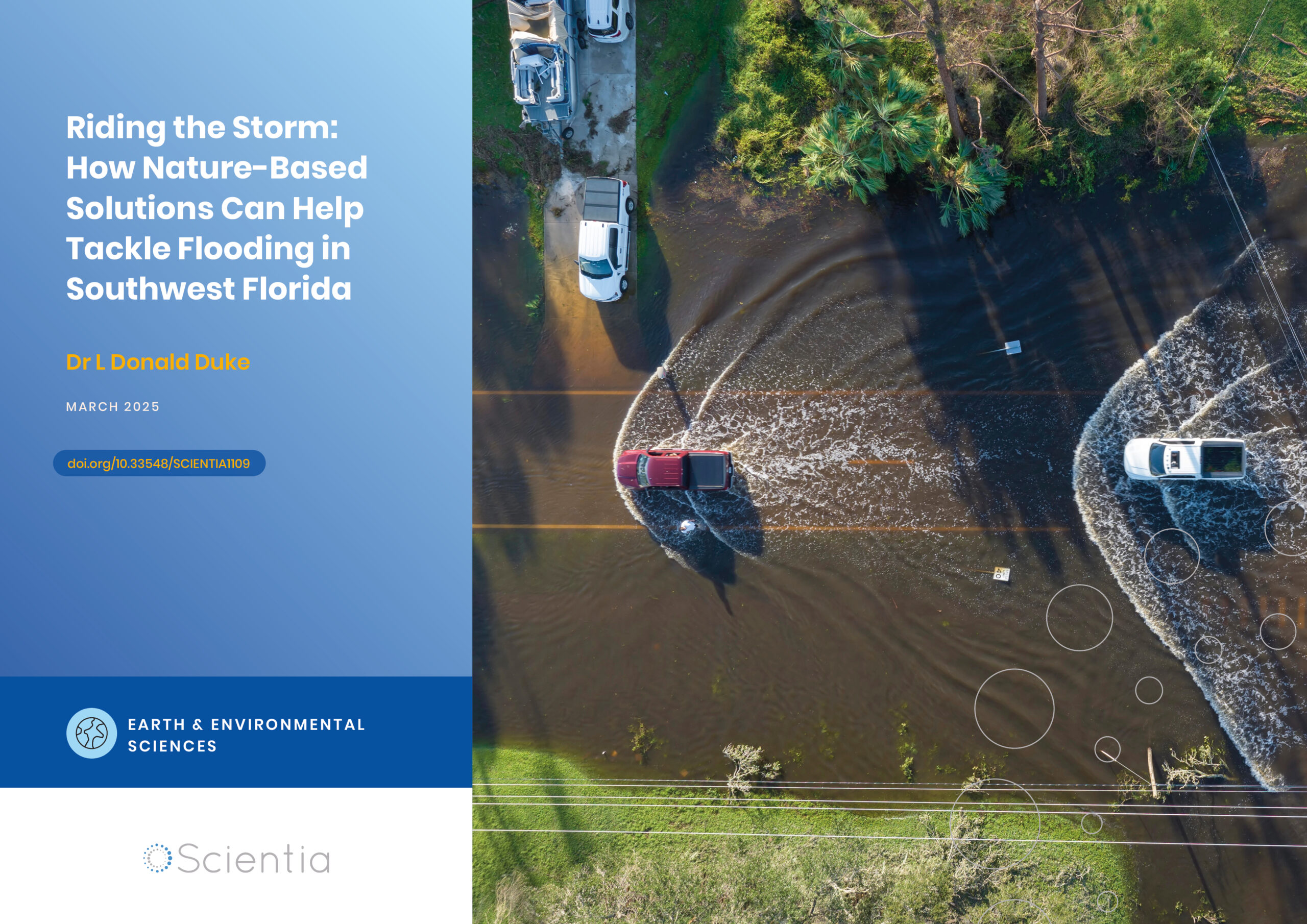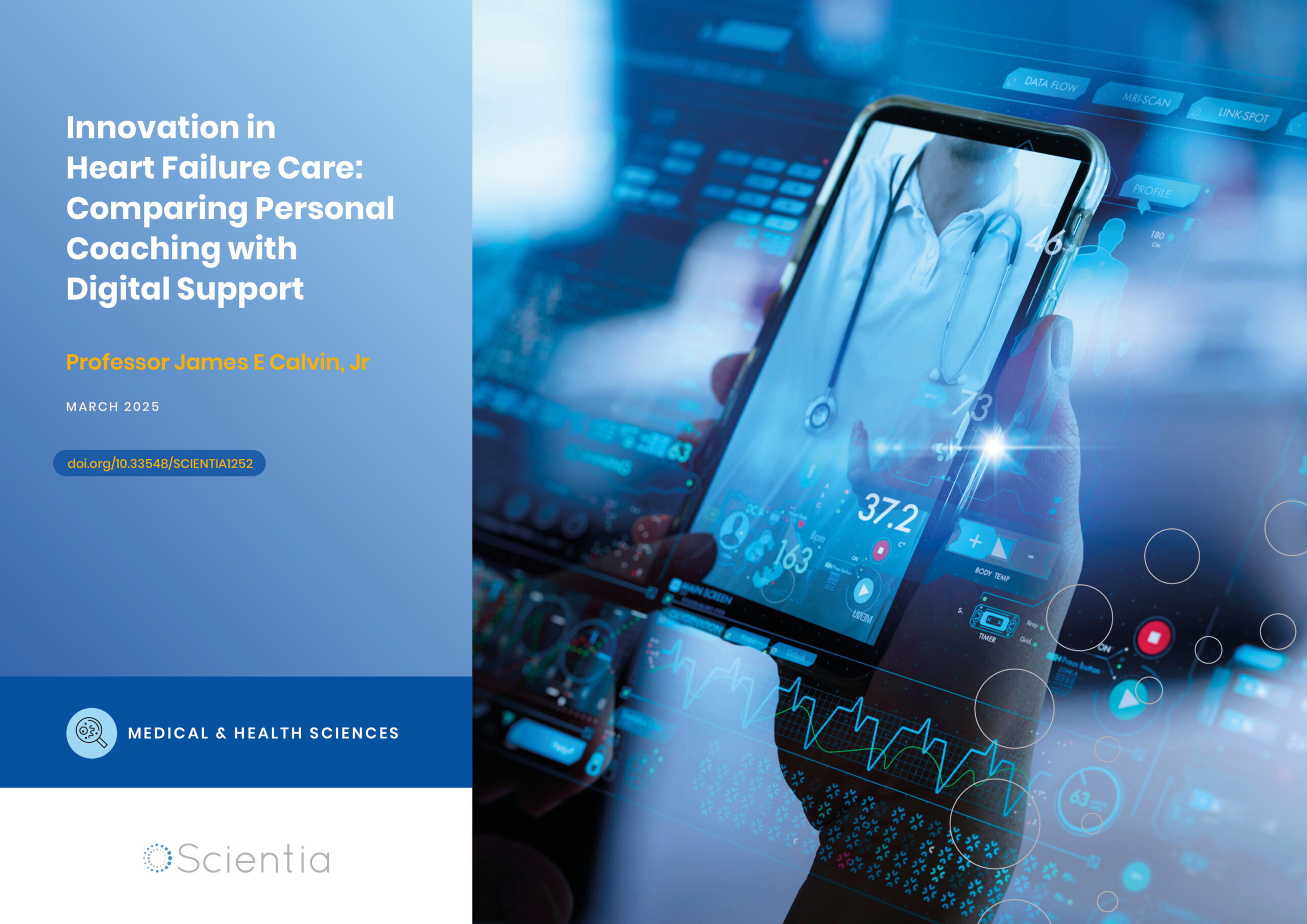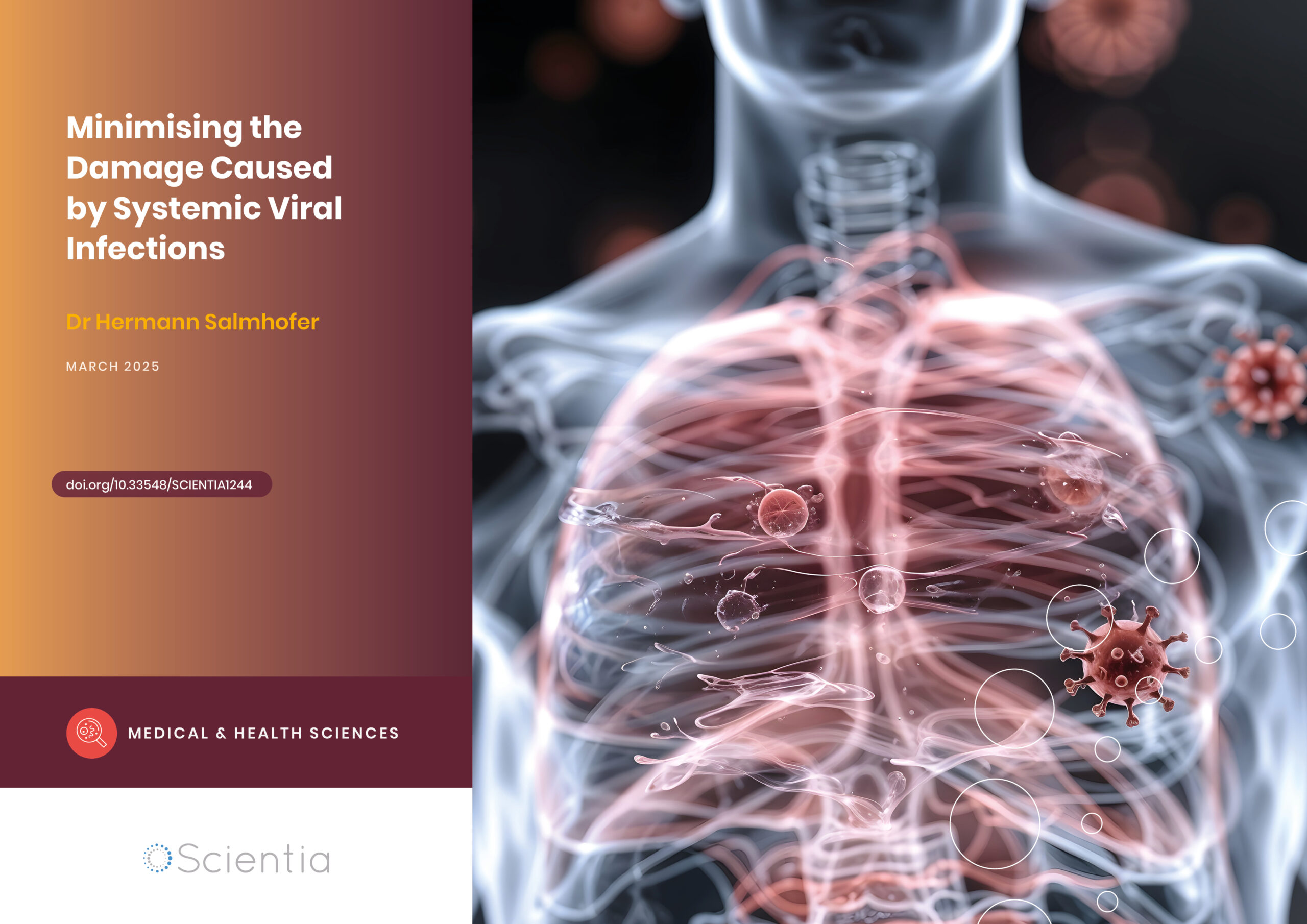Dr Mike Müller-Petke | Dr Stephan Costabel – Enhancing Groundwater Detection with Magnetic Resonance
Detecting underground water is of considerable importance, particularly for applications such as groundwater exploration, predicting the movement of contaminants in soils or building underground tunnels and mining facilities. Underground water is a limited resource that is essential for human life, but it can pose a safety threat in cases where the structural integrity of underground structures, such as tunnels, depends on solid earth being present throughout. Dr Mike Müller-Petke of the Leibniz Institute for Applied Geophysics, and Dr Stephan Costabel of the Federal Institute for Geosciences and Natural Resources, are investigating methods to greatly improve the detection of underground water, using a technology known as nuclear magnetic resonance.
Nuclear Magnetic Resonance
Nuclear Magnetic Resonance, or ‘NMR’, is a technique used in a wide variety of applications, from determining the structures of organic compounds to creating images of the human body in Magnetic Resonance Imaging (MRI).
In geophysics, the technique is used for measuring underground water. These NMR measurements are taken on the ground surface, as a way to detect subsurface water deposits without having to dig. Non-invasive groundwater detection is important in a variety of situations, such as when an understanding of groundwater flow is needed for agricultural applications or when planning underground tunnelling work, which requires that the surrounding soil and rock is strong enough to withstand collapse.
NMR takes advantage of the magnetic properties of the nuclei of hydrogen atoms. Because a molecule of water, H2O, contains two hydrogen atoms, NMR can be used to measure water – such as in the human body in the case of MRI, or underground in the field of geophysics.
The NMR method for detecting groundwater involves setting up large loops of cable on the ground surface. An electrical current is then sent through these loops, which generates an external magnetic field. This magnetic field causes the hydrogen nuclei in the underground water to become ‘excited’ as they align themselves with the field.
After the field is switched off, the hydrogen nuclei ‘relax’ back to their equilibrium states, orienting themselves roughly in the direction of Earth’s weak magnetic field. As they relax, the hydrogen nuclei release radio signals, which the NMR equipment can detect. The intensity of these radio signals is related to the number of hydrogen nuclei present, so the technique can therefore be used to estimate the amount of water present in the rock and soil below. Other information about the water’s surroundings can also be derived from these signals, as hydrogen nuclei relax in slightly different ways depending on their environment. Geophysical research in this field is focused on improving our ability to create three-dimensional maps of underground water from all of this information.
However, one drawback when using NMR is the presence of electromagnetic ‘noise’, which interferes with the signals. This noise is highest when NMR measurements are taken near electrical equipment, such as power lines and wind turbines, which generate their own electromagnetic fields that interfere with the relaxation signals. In these situations, the signal-to-noise ratios of NMR measurements can be extremely low, making it difficult for geophysicists to discriminate the signals from the background noise.
Furthermore, in many situations it is not possible to use large loops when conducting geophysical NMR measurements, such as inside a tunnel. In this scenario, small loops must be used, leading to weaker signals, and an even poorer signal-to-noise ratio. ‘When applying NMR to soil moisture measurements or inside a tunnel we have to use very small loops and the noise problem becomes our greatest issue,’ says Mike Müller-Petke, of the Leibniz Institute for Applied Geophysics.

CREDIT: A. Weitze (LBEG)
Overcoming Noise
To help overcome this noise interference, Dr Müller-Petke and his team have adopted the ‘pre-polarisation’ technique, which is standard in medical MRI laboratories but very difficult to apply in NMR for groundwater detection. Using this technique, Dr Müller-Petke can amplify the NMR signals coming from underground water, so that these signals become much more intense than the background noise. This technology has the potential to expand the use of NMR for high resolution subsurface water detection in areas where the noise strength is often too high compared to the signal intensity. This includes applications for identifying contaminant transport in urban soils and for ensuring the safety of mining and underground building work.
Dr Stephan Costabel, at the Federal Institute for Geosciences and Natural Resources, has also been focusing on improving NMR technology for the detection of underground water. Like Dr Müller-Petke, Dr Costabel has made significant progress in improving signal quality, but using a different approach. His method involves the use of noise cancellation to reduce the strength of the background noise, which allows the NMR signals to be more easily detected and analysed, greatly improving measurements of underground water.
Dr Costabel and Dr Müller-Petke have worked in collaboration for many years, despite working at different research institutions. ‘Mike and I first got in touch at the Berlin University of Technology in 2005/2006, where both of us had started our PhD research,’ reflects Dr Costabel. ‘Our theses were technically quite close – different aspects of magnetic resonance.’

Using Pre-Polarisation to Amplify Signals
Dr Müller-Petke’s pre-polarisation technique involves the use of electrical pulses, which are applied before the main magnetic excitation field is switched on, to increase the magnetisation of hydrogen nuclei in groundwater. This increased magnetisation leads to stronger NMR signals that can more easily be distinguished from noise.
The pre-polarisation pulses are generated by sending short pulses of DC electrical current through the coils used in the standard NMR method for detecting groundwater. These pulses generate short bursts of magnetic field, before the main AC electric current is passed through the coils. When the NMR equipment detects the radio signals from hydrogen nuclei, they are greatly amplified with respect to the noise. The team’s technique then uses software to account for the DC pulses, in order to accurately process the measurements. After this step, calculating the most-accurate image of the distribution of surrounding water is much less challenging.
Using a new NMR instrument, Dr Müller-Petke and his colleagues tested their method by carrying out field measurements on the frozen surface of a water reservoir, located in an area of high noise levels in Shaoguo, China. Prior to this field study, the pre-polarisation method had only been tested in the laboratory. In their tests, the team used their NMR measurements to create a model of the reservoir, and then compared this to physical measurements of the reservoir to see how accurate their new method was.
The pre-polarisation method resulted in data that were in good agreement with physical measurements of the liquid water beneath the frozen surface, despite it being located in an area of high noise. This makes the team’s technique a highly promising solution to the problems associated with low signal-to-noise ratios associated with NMR measurements of groundwater.
In addition to this successful outcome, the team also developed new ways to process their data to obtain further invaluable information. ‘Besides imaging the distribution of water, we continuously develop new data processing schemes that improve our ability to image the ability of water to move in the subsurface,’ says Dr Müller-Petke. ‘This involves measuring a parameter referred to as the hydraulic conductivity – a key parameter for understanding water movement.’

CREDIT: M. Sack (BGR)
Noise Cancellation
A recent study by Dr Costabel took a different approach to the same problem. Rather than amplifying the signals, he looked at ways to significantly reduce the noise in NMR measurements of underground water. Using his method, the environmental noise interference can be predicted and subsequently subtracted from the NMR measurements, in order to produce a far better signal-to-noise ratio.
After investigating several methods of noise cancellation, Dr Costabel determined that a technique called ‘reference-based noise cancellation’, or ‘RNC’, was the most effective for reducing noise levels in the NMR measurements, without damaging the useful signals.
His RNC method takes measurements of noise in different directions to best approximate its characteristics. These measurements are combined to become the so-called ‘reference noise’, which can be easily subtracted from the NMR signals.
Dr Costabel assessed the noise reduction produced by the RNC method in the rock laboratory of Mont Terri in Switzerland, an underground research facility located at a depth of 280 metres below ground. Using RNC, he was able to show that potential NMR signals from dangerous water deposits inside the rock could be identified if they existed, which is luckily not the case in Mont Terri. Dr Costabel further verified the technique by carrying out additional experiments using an artificial water reservoir in an urban area, where there was substantial noise interference.

CREDIT: M. Sack (BGR)
Future Directions
In the near future, Dr Müller-Petke would like to further improve his team’s pre-polarisation technique, in order to broaden its scope for use in the detection of underground water in tunnels and mines, where noise can often be a critical issue. In addition to optimising the instrument design, he also hopes to further amplify the pre-polarisation pulse, which will lead to further amplification of the NMR signals.
Dr Costabel would now like to focus on improving the ability to take groundwater NMR measurements from inside underground mining tunnels. The steel reinforcements used for tunnel support have a tendency to cause significant distortions of the Earth’s magnetic field and thus corrupt the NMR measurement, which remains a pertinent problem that Dr Costabel would like to overcome.
Reference
https://doi.org/10.33548/SCIENTIA456
Meet the researchers

Dr Mike Müller-Petke
Leibniz Institute for Applied Geophysics
Hannover
Germany
Dr Mike Müller-Petke was awarded his PhD in 2009 from the University of Technology Berlin, Germany. Upon graduating, he worked as a postdoctoral researcher at the Leibniz Institute for Applied Geophysics (LIAG), in Hannover, Germany, while also beginning a lectureship at the University of Technology Berlin. In 2015, he completed these positions and then went on to become the head of the department of ‘Geoelectrics and Electromagnetics’, at LIAG, and professor at the Leibniz University Hannover. His research focuses on improving magnetic resonance technology for geophysical near-surface applications, including the use of pre-polarisation as a way of amplifying signals detected using magnetic resonance.
CONTACT
E: mike.mueller-petke@leibniz-liag.de
W: https://www.leibniz-liag.de/en/institute/departments/geoelectrics-electromagnetics.html

Dr Stephan Costabel
Federal Institute for Geosciences and Natural Resources
Berlin
Germany
Dr Stephan Costabel earned his PhD at the Berlin University of Technology, Germany, in 2011. He has since worked as a senior research fellow at the Federal Institute for Geosciences and Natural Resources (BGR). He is currently researching and improving the use of magnetic resonance as a means of detecting underground water. Among his current research focuses is the development of effective filter techniques to reduce unwanted background interference for signals detected using magnetic resonance. Notable highlights of Dr Costabel’s career include being project partner and principle investigator for groundwater and mineral exploration, and moisture detection using magnetic resonance.
CONTACT
W: https://www.bgr.bund.de/SharedDocs/Kontaktdaten/costabelS.html
KEY COLLABORATORS
Dr Ronny Stolz, Leibniz Institute of Photonic Technology
Dr Tingting Lin, Jilin University, Changchun, China
Dr David Jaeggi, Swiss Geological Survey, Switzerland
Dr Tino Radic, Radic Research, Germany
FUNDING
German Research Foundation (DFG)
Federal Ministry of Economics and Technology (BMWi), Germany
Federal Ministry of Education and Research (BMBF), Germany
FURTHER READING
S Costabel, Noise analysis and cancellation for the underground application of magnetic resonance using a multi-component reference antenna – Case study from the rock laboratory of Mont Terri, Switzerland, Journal of Applied Geophysics, 2019, 169, 85.
T Lin, Y Yang, F Teng, M Müller-Petke, Enabling surface nuclear magnetic resonance at high-noise environments using a pre-polarization pulse, Geophysical Journal International, 2018, 212, 1463.


Creative Commons Licence
(CC BY 4.0)
This work is licensed under a Creative Commons Attribution 4.0 International License. 
What does this mean?
Share: You can copy and redistribute the material in any medium or format
Adapt: You can change, and build upon the material for any purpose, even commercially.
Credit: You must give appropriate credit, provide a link to the license, and indicate if changes were made.
More articles you may like
Dr Ying Zou | A New Type of Space Storm: The Extraordinary Auroral Event of April 2023
Space weather events can have dramatic effects on Earth’s magnetic field, potentially disrupting everything from power grids to GPS systems. Dr Ying Zou and her colleagues Dr Jesper Gjerloev and Shin Ohtani from Johns Hopkins University Applied Physics Laboratory led a groundbreaking investigation into an extraordinary disturbance in Earth’s magnetic field that occurred in April 2023. This unprecedented event is reshaping our understanding of how solar activity can trigger extreme space weather that impacts our technological systems.
Dr L Donald Duke | Riding the Storm: How Nature-Based Solutions Can Help Tackle Flooding in Southwest Florida
Florida grapples with mounting challenges related to inland flooding due to heavy precipitation, along with coastal flooding from rising sea levels and coastal storms. One important approach to address precipitation-originating flooding is to embrace land use practices runoff management in the upstream portions of at-risk watersheds, where sustainable design can relieve the pressures on drainage systems from continuing dense urban development in the low-lying Florida landscape. Dr L Donald Duke, from The Water School at Florida Gulf Coast University, plays a pivotal role in this endeavour. His work encompasses creating and evaluating flood-resilient land use practices and planning to manage stormwater runoff on the watershed scale.
Professor James Calvin | Innovation in Heart Failure Care: Comparing Personal Coaching with Digital Support
Heart failure remains one of the most challenging conditions facing healthcare systems today, with hundreds of thousands of new cases diagnosed annually. Professor James Calvin from Western University’s Schulich School of Medicine and Dentistry has led groundbreaking research comparing two innovative approaches to supporting patients: personal health coaches and smartphone reminders. His team’s findings suggest that combining human support with digital technology could transform how we help patients manage this complex condition.
Dr Hermann Salmhofer | Minimising the Damage Caused by Systemic Viral Infections
The mechanisms via which viral diseases infect and progress within the human body have become the subject of intense scrutiny since the emergence of the serious respiratory condition COVID-19, although many other viruses remain woefully under-researched. Recently, Dr Hermann Salmhofer and colleagues at the Paracelsus Medical University in Salzburg, Austria, have described the successful treatment of a harmful systemic virus affecting the kidneys, and suggest a possible new treatment target to mitigate the progression of the disease and prevent the development of permanent organ damage. Their findings, combined with broader research on viral infections, highlight the critical importance of both preventive measures and targeted treatments in managing viral diseases.




